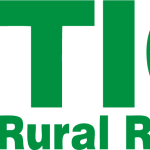Welcome to part eight of the column series on soybean micronutrients. The last couple of weeks I discussed boron, chloride, cobalt, copper, iron, and manganese. I will quickly cover how molybdenum (Mo) is essential to soybeans, known deficiencies or toxicities in the region, factors of molybdenum availability in soil, soil and plant tissue testing, and fertilizer recommendations. Micronutrients for Soybean Production in the North Central Region is a good regional publication that addresses manganese that I utilized as a resource for this news column.
In soybeans, molybdenum is a key micronutrient in two important enzymes related to nitrogen in the plant and the nitrogen-fixing bacteria Rhizobia. Molybdenum deficiency has similar symptoms as nitrogen deficiency, which is pale green plants with leaf veins not prominent and eventually pale yellow older leaves. Over the past decades, nitrogen deficiency has be documented when soybeans were planted for the first time in a field without inoculation, but there is no documented cases of molybdenum deficiency in southeast Nebraska soybeans that I am aware of. Molybdenum uptake by most plants is truly micro, less on than 0.1 lbs per acre, which is less than chloride, iron, boron, manganese, zinc, and copper.
Soybeans take up molybdenum as a negatively charged molecule or anion called molybdate (MoO42-) from the soil. Molybdenum is found in soil minerals and the molybdate anion is absorbed or held by soil organic matter, carbonates, and oxide/hydroxides. Acidic soil or low soil pH will make molybdenum less available to soybeans. Due to both Rhizobia bacteria and soybeans, it is beneficial to maintain soil pH above 6.0 and closer to a pH of 6.5 to maximize yield potential. Additionally, liming acidic soils is the best way to avoid molybdenum deficiency according to regional experts and agronomists. The soil test for molybdenum is a hot water extraction method, but it is not a routine soil test, so it does cost another $5 to $6 per sample. Molybdenum along with chloride can be added to a routine plant tissue analysis for another $6 to $7 per sample. Taking the uppermost fully mature trifoliolate during full bloom, typically in early July is the best time. Learn more about how to conduct soybean plant tissue sampling by watching a video on my website at croptechcafe.org. The molybdenum sufficiency range is 1 to 5 ppm in the tissue sample.
Given the small amount (less than 0.1 lbs/acre) of molybdenum needed by soybeans compared to other micronutrients, seed treatment could be an option, but liming acidic soils and increasing the soil pH to above 6.0 is the best soybean fertility program for southeast Nebraska. If you are still concerned about molybdenum, I encourage you to conduct your own on-farm research through the UNL On-Farm Research Network by contacting me. I look forward to writing about nickel in next week’s column. You can share or read this news column online through my local website for Saline, Jefferson, and Gage counties at croptechcafe.org. Know your crop, know your tech, know your bottom line.


